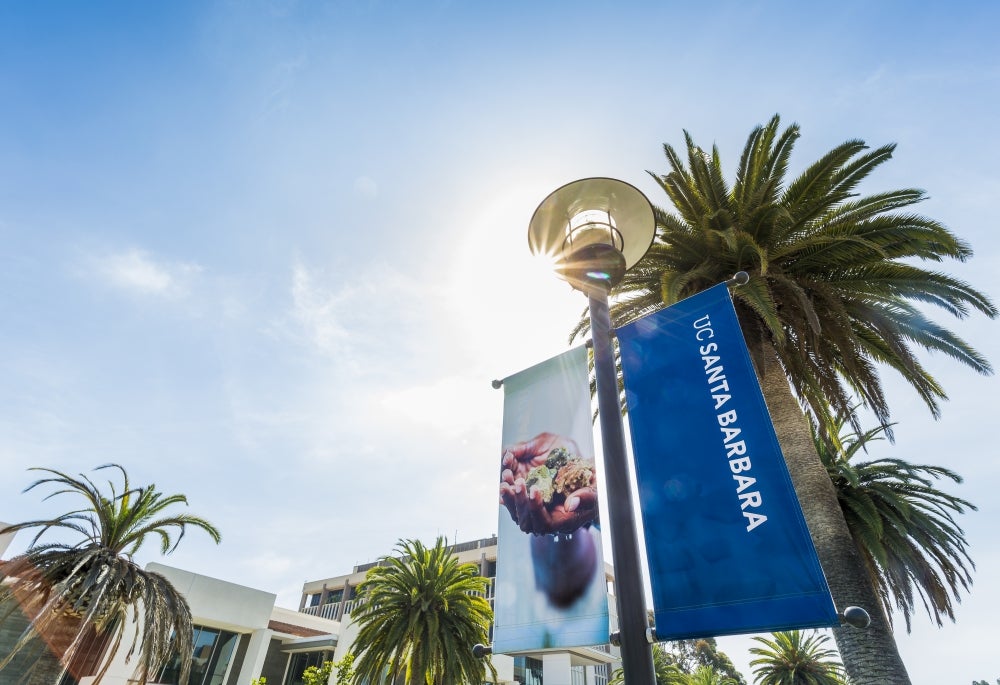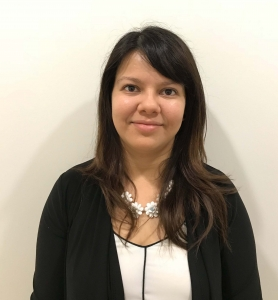
Better Together


The pandemic has hit migrant and Indigenous communities disproportionately hard. In response, research teams led by UC Santa Barbara graduate students, in collaboration with the National Association for the Advancement of Colored People (NAACP) and the recently-formed Latinx and Indigenous Migrant COVID-19 Response Task Force, have been working with local health officials and community members to develop solutions.
A course in the Department of Counseling, Clinical, and School Psychology, taught by Melissa Smith, M.D., Melissa Morgan and Maryam Kia-Keating, introduced graduate students to community-based participatory research methods focused on health equity.
“The course promotes social justice and equity, and addresses structural racism, not just by virtue of the readings and amplifying the voices of minoritized communities, but through action,” said Kia-Keating, a professor of clinical psychology, who directs the campus’s Trauma & Adversity, Resilience & Prevention (TARP) research laboratory and the Center for Research and Excellence on Adversity and Resilience (CREAR), in partnership with two local youth- and family-serving agencies, the Santa Barbara Neighborhood Clinics and CALM. “The students are involved directly with community organizations and community members, and rather than playing the part of the expert-outsider, their role is as a solution-partner.” Teams of graduate and undergraduate students, for example, developed and analyzed a community survey on attitudes toward vaccines and provided technical support to ensure language access to a virtual public forum in Spanish and Indigenous languages.
“We are so proud of the work our graduate students are doing on behalf of health equity and social justice,” said Leila Rupp, Interim Anne and Michael Towbes Graduate Dean. “By engaging in research with, and not just for, community members, they are making a difference for marginalized populations throughout Santa Barbara County.”
“The current efforts to reach the Latinx and Indigenous migrant communities in Santa Barbara County are very impressive,” said Smith, a family medicine physician, health equity advocate and educator, who serves as director of UCSB Health Equity Initiatives and deputy director of education and training for the UC Global Health Institute’s Women’s Health Gender and Empowerment Center of Expertise. “The Santa Barbara County Public Health Department is prioritizing vaccine equity, in particular for disproportionately impacted communities, and is working very closely with a broad range of community partner organizations who are trusted by community members.”
As the virus hit communities across the United States during late winter 2020, students began working on outreach and resource-building with the Latinx and Indigenous Migrant COVID-19 Response Task Force, founded by Van Do-Reynoso, M.D., director of the Santa Barbara County Public Health Department. Graduate students, working with the Center for Publicly Engaged Scholarship at UC Santa Barbara, mentored undergraduate team members in working with community partners.
Team leader Trevor Auldridge Reveles, a Ph.D. student in sociology and a National Science Foundation Graduate Research Fellow, has led community-building research and events since last year. “I think many undergraduate students come to UCSB looking for ways to give back to their community, and I think the students that work with us learn that you can use research skills to advance social justice,” he said. “While most of the time students who participate in projects are giving back to communities other than their own, a few of our student collaborators — Citlalli Pucheta, Elizabeth Melena and Shiela Mae Valerio — are local community members themselves. I think the biggest benefit we give students is an emotionally supportive space where they put their energy towards projects that can produce social change.”
Courtney Wright, a Ph.D. student focusing on educational policy at the Gevirtz Graduate School of Education, had to evacuate from China with her family due to COVID-19. Her experience working as a 5th grade teacher during the pandemic in Florida revealed deep disparities in access to the internet, technological devices and daily meals within underserved communities in her school district.
As a doctoral student at UC Santa Barbara, she pursued her research under Smith’s guidance and went on to lead the team working with the local NAACP to collect data on the impact of COVID-19 among the county’s communities.
“The collection of this data has allowed our team to develop a report that details the demographics of Santa Barbara County, COVID-19 related deaths, hospitalizations, infections and the impact that COVID-19 is having on the local jails and prisons within Santa Barbara County as it relates to individuals who have contracted the virus, deaths and those who have recovered,” Wright said. “We have also collected data to show how underserved communities are at the frontline of those who have suffered the most from the impacts of COVID-19 within the county.”
Another sociology Ph.D. student, Alex Maldonado, a graduate student researcher at the Broom Center for Demography, is co-coordinator of a team working with the Santa Maria-Lompoc chapter of the NAACP on a demographic report about COVID-19 infection rates on the Santa Barbara County population. She also provides assistance at Infinity Healing Ceremonies hosted throughout the county. “These ceremonies provide a collective healing space for individuals who have lost a loved one to COVID-19,” she said. “So far, we have hosted two of these ceremonies, and we plan on hosting more.”
As a teacher, Maldonado also has seen how important community-immersed research work has been to her undergraduate students involved in the projects. “For example, in one of our current projects,” she said, “undergraduate students have had to spend a lot of time researching what resources are available for community members who do not speak English and/or do not have financial stability and cannot afford adequate healthcare.”
Access is key to working with the community, according to the researchers.
“Access does not entail just creating a translated information sheet,” said Morgan, a professor and director of clinical training in the counseling, clinical, and school psychology department. “It entails considering the life circumstances and needs of the information recipients, the resources available to them and how to make the information culturally understandable and relatable. Community members help determine what are the best, most socially just and culturally appropriate approaches of information dissemination and how to best solve problems of access.”
Maldonado noted the experience of being part of a wider community throughout her time as a research team leader. “The course teaches students how to be part of a whole, moving piece that is made up by professors, community leaders, students and volunteers,” she said. “This has been the most impactful to me, to experience what it is like to be part of something bigger than yourself and to experience the trust and gratitude developed when you work with someone else to help others in need.”
Smith, who participates in and informs many community health briefings for the county, hopes to build future health equity-focused collaborations between the university and the Santa Barbara County Public Health Department. “We are currently exploring new projects focused on health equity,” she said, “and given our ongoing close collaboration, I would expect there to be more opportunities to involve UCSB Health Equity scholars and researchers in future projects.”



